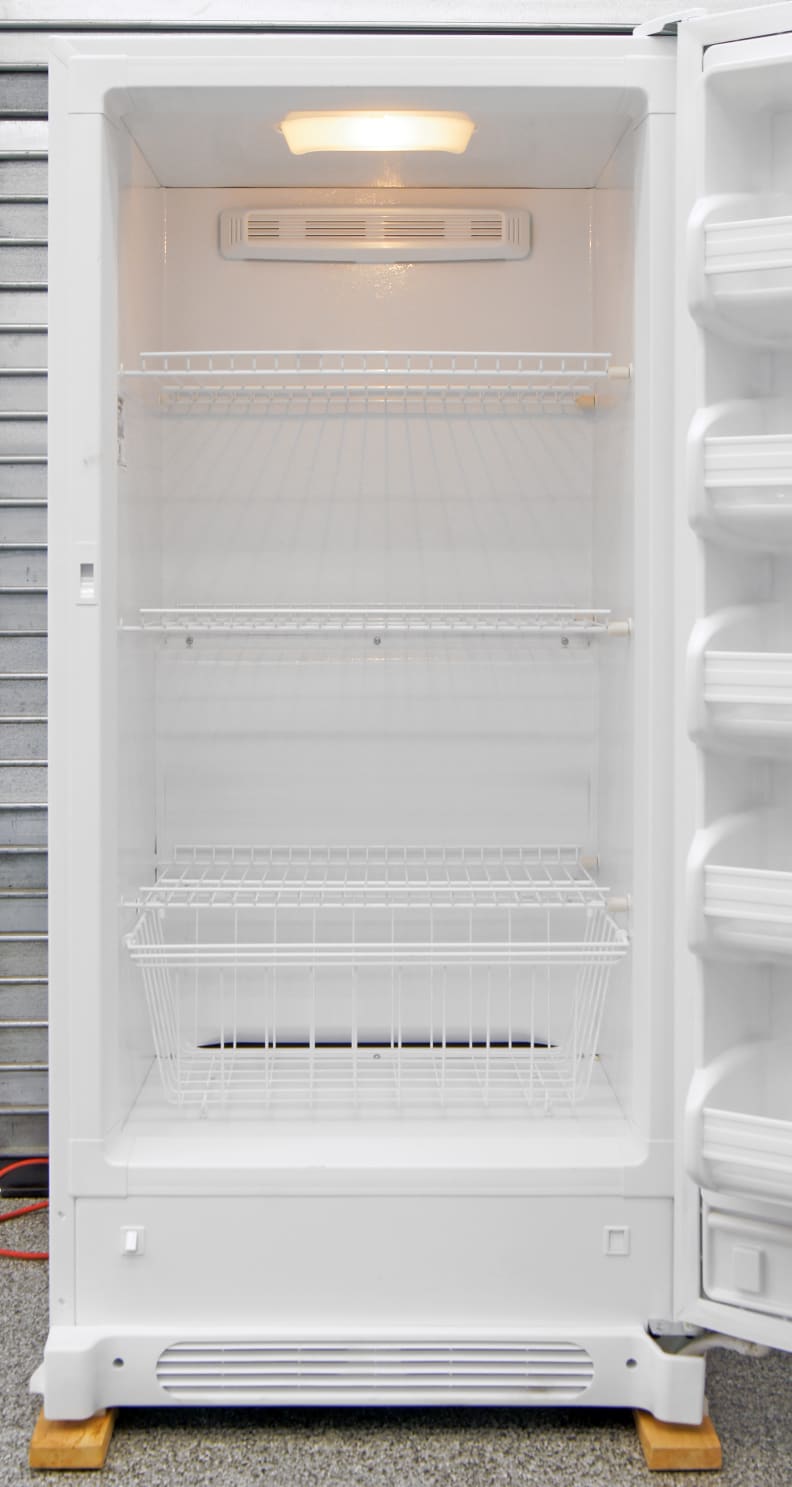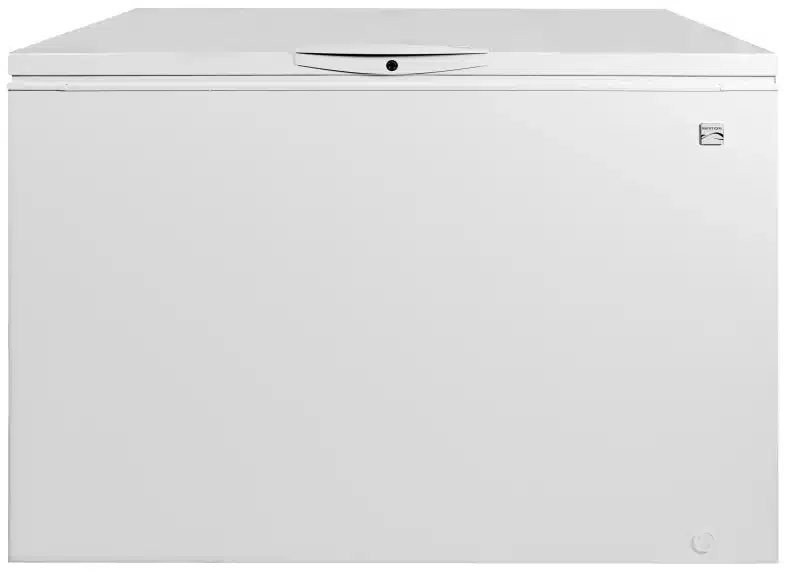Adding Freon to your Kenmore freezer can restore its performance and extend its lifespan. However, adding Freon to your Kenmore freezer is not a simple or safe task. You should only attempt it if you have the proper tools, skills, and knowledge. Otherwise, you should contact a professional technician for service. In this post, we will show you how to add Freon to your Kenmore freezer.
To add Freon to your Kenmore freezer, you need to identify the type of Freon your freezer uses, locate the low-pressure service port on the compressor, install a bullet-piercing valve and a charging hose, check the pressure of the Freon with a gauge, and add the Freon until the pressure reaches the optimal level.
How to Add Freon to Your Kenmore Freezer
The process of adding Freon to your Kenmore freezer may vary depending on the model and year of manufacture of your freezer. You should always refer to the label or manual of your specific freezer model for more accurate information and instructions. However, here are some general steps that you can follow to add Freon to your Kenmore freezer:
- Identify the type of Freon your freezer uses. You can find this information on the label or manual of your freezer model, or on the EnergyGuide label if your freezer has one. The possible options are R-12, R-13B1, R-22, R-410A, R-502, and R-503. You should only use the same kind of Freon listed on the label, as mixing different types of Freon can damage your freezer or cause an explosion.
- Locate the low-pressure service port on the compressor. The compressor is the black metal cylinder that is located at the back or bottom of your freezer. The low-pressure service port is a small metal tube that comes out of the compressor and connects to a larger tube that goes into the freezer. The low-pressure service port may have a cap or a valve on it that you need to remove.
- Install a bullet-piercing valve and a charging hose on the low-pressure service port. A bullet-piercing valve is a device that punctures the low-pressure service port and allows you to connect a charging hose to it. A charging hose is a tube that connects the bullet-piercing valve to a can of Freon or a gauge. To install them, follow these steps:
- Wrap some Teflon tape around the threads of the bullet-piercing valve and screw it onto the end of the charging hose.
- Place the bullet-piercing valve over the low-pressure service port and tighten it with an adjustable wrench.
- Turn the handle of the bullet-piercing valve clockwise until you hear a hissing sound, indicating that it has pierced the low-pressure service port.
- Turn the handle back counterclockwise until it stops, indicating that it has opened the valve.
- Check the pressure of the Freon with a gauge. A gauge is a device that measures the pressure of the Freon in pounds per square inch (psi). You can attach a gauge to the other end of the charging hose or use a separate hose that connects to both the gauge and the can of Freon. To check the pressure, follow these steps:
- Turn on your freezer and let it run for at least 15 minutes.
- Attach the gauge to the charging hose or connect both hoses to a T-fitting.
- Read the pressure on the gauge and compare it to the optimal pressure for your type of Freon and ambient temperature. You can find this information on a pressure-temperature chart online or in your manual.
- If the pressure is too low, you need to add more Freon. If the pressure is too high, you need to release some Freon.
- Add or release Freon until the pressure reaches the optimal level. To add or release Freon, follow these steps:
- Attach a can of Freon to the other end of the charging hose or connect both hoses to a T-fitting.
- Open or puncture the can of Freon according to its instructions.
- Turn on your freezer and let it run for at least 15 minutes.
- To add Freon, open or adjust the valve on the charging hose until you hear a hissing sound, indicating that Freon is flowing into your freezer. Check the pressure on the gauge frequently and stop adding Freon when the pressure reaches the optimal level.
- To release Freon, open or adjust the valve on the bullet-piercing valve until you hear a hissing sound, indicating that Freon is flowing out of your freezer. Check the pressure on the gauge frequently and stop releasing Freon when the pressure reaches the optimal level.
- Remove the bullet-piercing valve, the charging hose, and the gauge from your freezer. To remove them, follow these steps:
- Turn off your freezer and unplug it from the power outlet.
- Close or adjust the valve on the bullet-piercing valve until it stops, indicating that it has closed the valve.
- Turn the handle of the bullet-piercing valve counterclockwise until it stops, indicating that it has retracted the piercing pin.
- Loosen the bullet-piercing valve from the low-pressure service port with an adjustable wrench and remove it from the charging hose.
- Remove the cap or valve from the low-pressure service port and replace it.
- Remove the gauge from the charging hose or disconnect both hoses from the T-fitting.
- Dispose of the empty can of Freon according to local regulations.
You have now successfully added Freon to your Kenmore freezer.

FAQs
Q: How do I know if my Kenmore freezer needs more Freon?
A: Some signs that your Kenmore freezer needs more Freon are:
- The freezer is not cooling properly or at all
- The freezer is running longer or more frequently than usual
- The freezer is making loud or unusual noises
- The freezer has frost or ice buildup on the walls or coils
- The freezer has a chemical or burning smell
Q: How often do I need to add Freon to my Kenmore freezer?
A: You should not need to add Freon to your Kenmore freezer regularly, as Freon is supposed to last for the lifetime of your freezer. However, if your freezer has a leak or a faulty part that causes Freon to escape, you may need to add Freon occasionally. You should also fix the leak or replace the faulty part as soon as possible, as Freon can be harmful to your health and the environment.
Q: What are the risks of adding Freon to my Kenmore freezer?
A: Adding Freon to your Kenmore freezer can be risky if you do not have the proper tools, skills, and knowledge. Some of the risks are:
- You can damage your freezer or cause an explosion if you use the wrong type of Freon, add too much or too little Freon, or install the bullet-piercing valve incorrectly.
- You can harm yourself or others if you inhale, ingest, or touch Freon, as it can cause respiratory problems, skin irritation, eye damage, or poisoning.
- You can harm the environment if you release Freon into the air, as it can deplete the ozone layer and contribute to global warming.
Conclusion
Adding Freon to your Kenmore freezer can restore its cooling ability and extend its lifespan. However, adding Freon to your Kenmore freezer is not a simple or safe task. You should only attempt it if you have the proper tools, skills, and knowledge. Otherwise, you should contact a professional technician for service.


